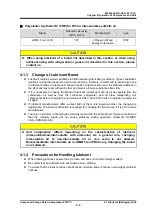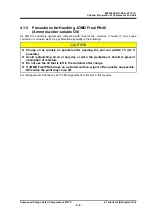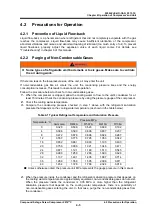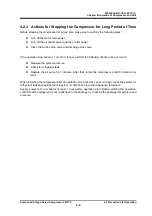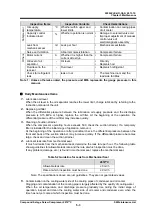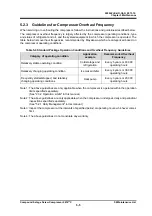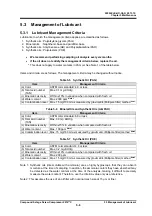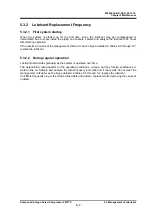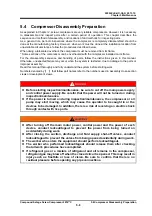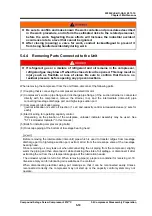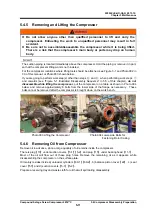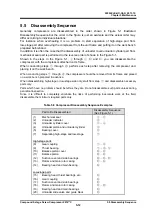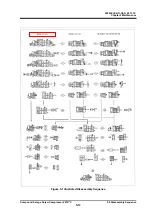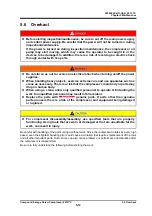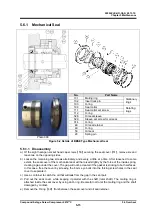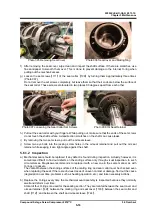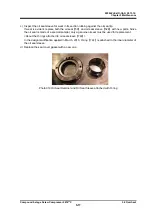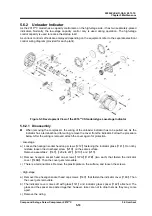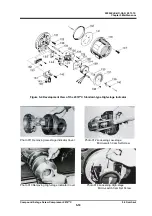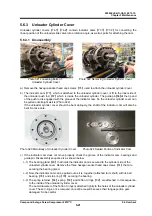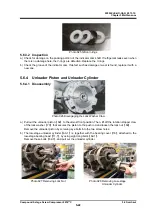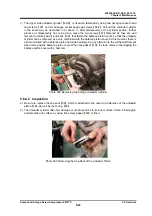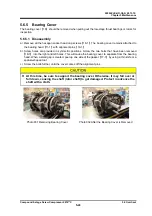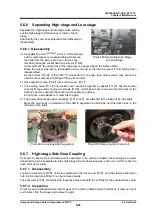
2200LZJE-HO-C6-N_2013.12.
Chapter 5 Maintenance
Compound 2-stage Screw Compressor 2016**C
5.4 Compressor Disassembly Preparation
5-10
Be sure to confirm and make known the work contents and procedures described
in the work procedure, and inform the estimated risks to the related personnel,
before the work. Neglecting these efforts will increase the industrial accident
occurrence rate to a level that cannot be ignored.
After closing (opening) a valve for work, conduct lockout/tagout to prevent it
from being handled accidentally during work.
5.4.4 Removing Parts Connected to the Unit
If refrigerant gas or a mixture of refrigerant and oil remains in the compressor,
refrigerant gas may blow off when the closed circuit is opened. This may result in
injury such as frostbite or loss of vision. Be sure to confirm that there is no
residual pressure before opening any pipe connections.
When removing the compressor from the unit frame, disconnect the following parts.
(1) Coupling that is connecting the compressor and electric motor
(2) Compressor's suction pipe flange and discharge pipe flange (if the suction strainer is connected
directly with the compressor, remove the strainer, too), and the intermediate (inter-unit) pipe
connecting low-stage discharge port and high-stage suction port
(3) Compressor's lubrication piping
(journal lubrication (2 sets), oil injection (1 set) and capacity control increase/decrease (2 sets for
each))
(4) Electric wiring for operating capacity control
(Depending on the situation of the workplace, unloader indicator assembly may be used. See
"5.7.14 Unloader Indicator" in this manual.)
(5) Bolts for installing compressor (leg bolts)
(6) Oil escape piping at the bottom of low-stage bearing head
Before removing the intermediate (inter-unit) pipe which is used to transfer oil/gas from low-stage
discharge port to high-stage suction port, extract all oil from the oil escape valve of the low-stage
bearing head.
Since remaining oil may leak out when disconnecting the oil piping from the compressor, slightly
warm the piping and then disconnect it while checking the state of oil spillage, or disconnect it after
extracting the oil from the oil temperature gauge of the lubrication header.
The unloader cylinder is full of oil. When removing pipe(s), prepare a container for receiving oil. 18
liter-size empty can for lubricating oil is suitable as the container.
When disconnecting electrical wiring, put markings so that it can be reconnected easily. Unless
reconnected correctly, the compressor may not start up or the capacity control system may not
operate.


